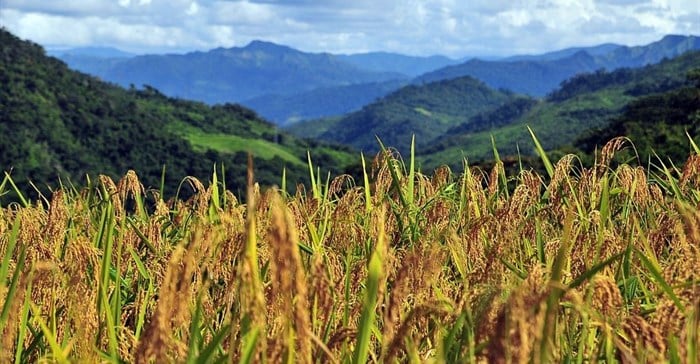






As I write this article from my home in Bloemfontein, we have recorded only 8mm of rain for December. It feels as though we are back in December 2015 with another drought looming ahead.
Apart from a possible re-entry into drought, our economy’s performance for the past year has not exactly been stellar. And, despite our new president, the political landscape is still plagued by instability. As we start the new year it seems that we are facing another tough season. The question is, how tough will it really be?
According to rainfall data from Silostrat (Table 1) most production areas received only about a quarter of their average rainfall from the beginning of September to the beginning of December during the summer grain planting season, which runs from 1 September to 31 December. Rainfall during this period in 2018, for six of the seven mentioned depots, was even lower than in 2015. Although some areas could still plant in December the landfall was inadequate, and the effect of the diminished expected crop was obvious in the SAFEX future maize price increases during the last month of the planting season.
Table 1: Rainfall figures at Silostrat depots.
| 1 Sep – 31 Dec | 1 Sep – 30 Nov | ||
| Depot | Average mm | 2015 mm | 2018 mm |
| Bothaville | 220 | 147 | 36 |
| Welkom | 224 | 144 | 47 |
| Bultfontein | 190 | 41 | 69 |
| Hoopstad | 154 | 55 | 51 |
| Hertzogville | 137 | 44 | 27 |
| Douglas | 47 | 65 | 16 |
| Middelburg MP | 249 | 173 | 168 |
In terms of animal production, it is a little early to speculate on outcomes in terms of primary extensive production. Although the rain is late, it may be in time for the grassland regions of many summer rainfall areas. The lower than expected maize crop, with associated higher prices, will have an impact on primary producers through secondary linkages. During the past year prices for weaned animals and carcasses in the sheep and cattle sectors, remained at 2017 levels. This was largely due to significant price increases between 2016 and 2017. Although I anticipated an inflationary linked increase for 2019, it may be time to reconsider.
If low maize supplies continue to drive the price up, increased feed costs will put the feedlots under pressure. This will, in turn, put pressure on the price of weaned animals. Also worth considering is that late rains may drive livestock producers to sell off weaners, putting further pressure on the weaner price.
Increased feed costs will also influence intensive production systems such as poultry and pork. The poultry sector is already under pressure due to cheap imports into South Africa and increased feed costs will force some producers out of the market. Pig farmers have had a very tough year with low demand for processed pork following the listeriosis outbreak, which drove the prices of all pork carcasses down. Although the pork price saw some recovery towards the end of 2018, feed price increases would be a heavy blow for the sector to take so soon after the losses of the previous year.
The economy is the other side of the coin for the year ahead. The country’s economic position may readily be associated with demand, but it would be a mistake to dismiss the influence of supply.
Negative economic growth in two quarters of 2018 placed us in a technical recession, which is very definitely not a desired scenario. Although inflation was under a relative degree of control for the greater part of the year, it rose towards the end of 2018 with further inflationary increases predicted. The rand maintained its poor performance, remaining under pressure against the US dollar, the euro and the British pound.
In this light, the Monetary Policy Committee (MPC) decided on a strategy for the coming year of tighter economic policy by increasing interest rates. According to the MPC this will protect the rand and keep inflation under control. Unfortunately, it may serve to diminish economic growth even further. It is going to be difficult to keep inflation under control with food price inflation as a major expected contributor to overall inflation for the next year. The increase in interest rates is not an effective mechanism for the control of food prices.
The tighter monetary policy, through increased interest rates, will have a negative effect on agricultural producers. Agricultural debt is currently running at the highest levels ever and increased interest rates will make it even more difficult for struggling producers to pay back their loans.
All the indicators seem to point to difficult times ahead. Although it is too late for many of the dryland grain farmers to rescue the season, there is a reason to hope that mid- and late-summer rains will bring relief to livestock farmers and avoid a situation where they are forced to buy in feed.
South Africans are not strangers to difficulty and I believe we will survive this year as we have survived past challenges. What is worrying is that it becomes increasingly difficult to overcome continuous setbacks. Debts pile up and producers begin to lose hope. This also has a negative effect on agricultural businesses supplying the industry or retrieving their production inputs from the industry. Every year we hope for a better year ahead; perhaps this year our hopes will be fulfilled, but perhaps we will have to endure a bumpy ride in 2019, holding on for a more prosperous 2020.

AgriOrbit is a product of Centurion-based agricultural magazine publisher Plaas Media. Plaas Media is an independent agricultural media house. It is the only South African agricultural media house to offer a true 360-degree media offering to role-players in agriculture. Its entire portfolio is based on sound content of a scientific and semi-scientific nature.
Go to: http://agriorbit.com/